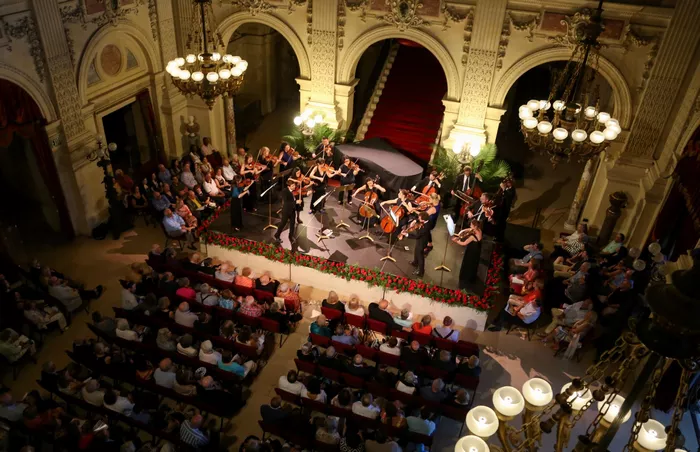In the vast tapestry of classical music, few figures stand as tall and influential as Franz Joseph Haydn. Often hailed as the “Father of the Symphony” and the “Father of the String Quartet,” Haydn’s contributions to the classical music landscape are immeasurable. This article delves into the life, work, and enduring legacy of this musical luminary, shedding light on the intricacies of his compositions and the profound impact he had on the development of Western classical music.
Early Life and Musical Apprenticeship
Franz Joseph Haydn was born on March 31, 1732, in Rohrau, Austria, into a humble family with a musical background. His early exposure to music came through his parents, and at the tender age of eight, he joined the choir at St. Stephen’s Cathedral in Vienna. However, it was his appointment as a young musician in the service of the Esterházy family that marked the beginning of his illustrious career.
Under the patronage of the Esterházys, Haydn’s compositional talent flourished. His early works reflect the influence of Baroque composers such as Carl Philipp Emanuel Bach and Johann Stamitz. As Kapellmeister, Haydn was responsible for creating a vast amount of music, including symphonies, operas, chamber music, and oratorios, laying the groundwork for his later innovations.
Innovations in Form and Structure
One of Haydn’s most significant contributions to the classical music repertoire lies in his pioneering work with musical form and structure. The symphony, as we know it today, owes much of its development to Haydn’s experimentation and ingenuity. His symphonies became laboratories of innovation, where he pushed the boundaries of form, tonality, and orchestration.
Haydn’s early symphonies often adhered to the three-movement structure, but as he matured as a composer, he expanded the form to include four movements. The “Surprise Symphony” (Symphony No. 94) is a prime example of his ability to captivate audiences through unexpected twists and dynamic contrasts, showcasing his humor and mastery of orchestration.
His contributions to the string quartet genre are equally groundbreaking. Haydn’s exploration of thematic development, counterpoint, and the interplay between instruments elevated the string quartet to a level of sophistication that inspired generations of composers. The six Opus 20 quartets are exemplary in their use of intricate textures and innovative harmonic progressions.
The Esterházy Years: A Creative Haven
Haydn’s employment with the Esterházys afforded him the luxury of time and resources to experiment and refine his craft. The secluded environment of the Esterházy estates provided him with the freedom to compose without the pressures faced by many of his contemporaries. This period of relative tranquility allowed Haydn to cultivate his unique voice and explore new artistic avenues.
His relationship with the Esterházy family, particularly with Prince Nikolaus Esterházy, was characterized by mutual respect and support. The prince’s genuine appreciation for Haydn’s music enabled the composer to stretch the boundaries of convention, resulting in some of his most celebrated compositions.
Musical Innovation and Emotional Range
Beyond his structural innovations, Haydn demonstrated a remarkable ability to convey a wide range of emotions through his music. His compositions are known for their expressive depth, from the exuberant joy of his “London Symphonies” to the poignant melancholy of works like the “Farewell Symphony” (Symphony No. 45). Haydn’s mastery of musical rhetoric allowed him to communicate complex emotions with subtlety and grace, paving the way for the Romantic era that would follow.
The oratorio “The Creation” stands as a testament to Haydn’s ability to capture the grandeur of the sublime. A monumental work that explores the Biblical narrative of the creation of the world, it showcases his command of choral writing, orchestration, and narrative storytelling. “The Creation” remains a cornerstone of the choral repertoire, attesting to Haydn’s enduring impact on both instrumental and vocal music.
Legacy and Influence
Haydn’s influence extends far beyond his own time, shaping the course of Western classical music for centuries. His compositions laid the groundwork for the symphonic and chamber music traditions that would be expanded upon by subsequent composers, including his protégé Wolfgang Amadeus Mozart and the young Ludwig van Beethoven.
The structural innovations introduced by Haydn also left an indelible mark on the Romantic era, influencing composers such as Franz Schubert and Johannes Brahms. The concept of the cyclic form, where thematic material recurs throughout a composition, became a hallmark of later Romantic symphonies.
See Also: Country Music Scandals
Conclusion
In the annals of classical music history, Franz Joseph Haydn’s legacy is etched with the indelible ink of innovation and artistry. His symphonies and string quartets remain cornerstones of the repertoire, studied and celebrated by musicians and audiences alike. Haydn’s enduring influence reaches beyond the confines of his time, serving as a bridge between the Baroque and Romantic eras.
As we unravel the layers of Haydn’s compositions, we discover a musical genius whose creativity knew no bounds. His ability to infuse emotion into structural innovation created a legacy that resonates through the ages. Franz Joseph Haydn, the unassuming maestro from Rohrau, stands as a testament to the transformative power of music and its ability to transcend temporal boundaries, leaving an indelible imprint on the hearts and minds of generations to come.

